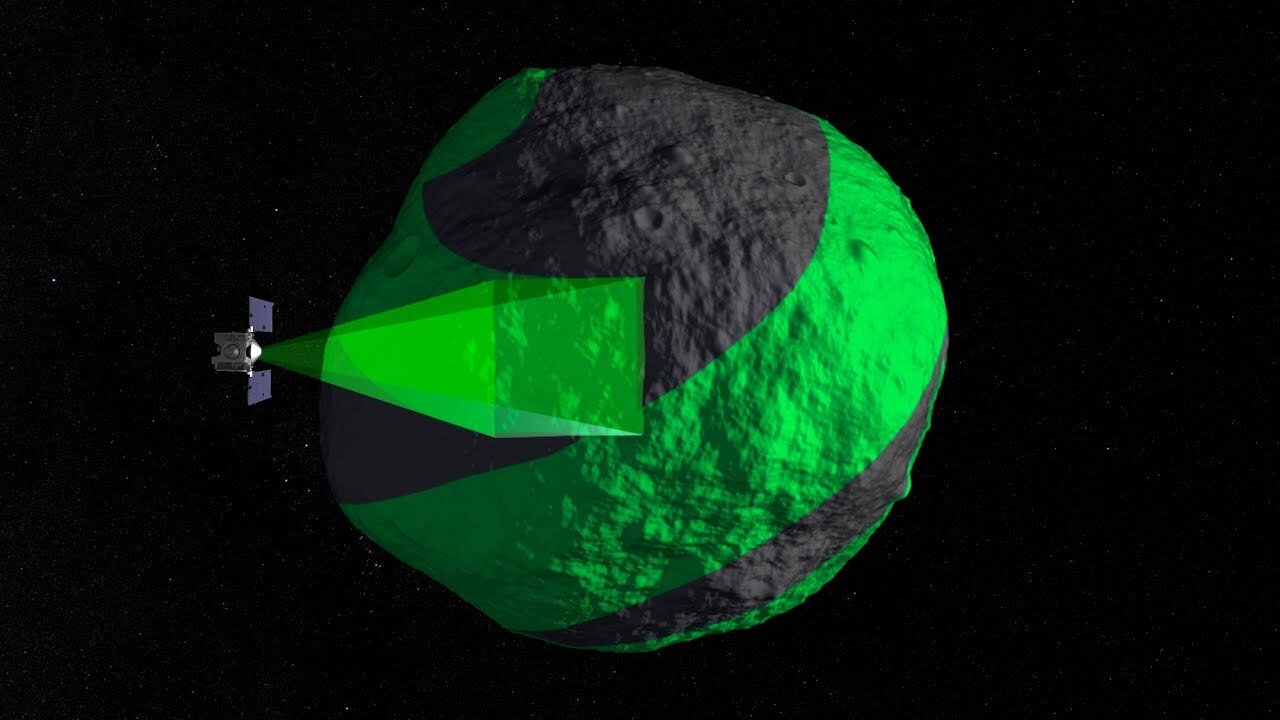Premium Only Content

The OSIRIS-REx mission reached Bennu //dxbduba1
NASA's OSIRIS-REx (Origins, Spectral Interpretation, Resource Identification, Security, Regolith Explorer) mission was a spacecraft mission launched in 2016 with the goal of studying and collecting samples from the near-Earth asteroid Bennu. The mission had several key objectives:
Sample Collection: OSIRIS-REx was designed to approach Bennu, study it in detail, and collect a sample of regolith (loose surface material) from the asteroid. This material would provide valuable insights into the composition and history of Bennu and its potential as a resource for future space exploration.
Return to Earth: After collecting the sample, OSIRIS-REx was intended to return to Earth with the precious cargo. The sample capsule was designed to re-enter Earth's atmosphere and land in a remote area in Utah, where scientists could retrieve and study the samples.
Asteroid Characterization: The spacecraft was equipped with a suite of instruments to study Bennu's size, shape, rotation, composition, and spectral properties. This information was expected to help scientists understand the formation and evolution of asteroids and their role in the early solar system.
Impact Hazard Assessment: Bennu is classified as a potentially hazardous asteroid, which means it had a small chance of impacting Earth in the late 22nd century. OSIRIS-REx's data collection aimed to improve our understanding of the Yarkovsky effect (a non-gravitational force that affects asteroid orbits) and refine Bennu's orbit predictions to assess its long-term impact risk.
Spacecraft Operations and Technology: The mission provided valuable experience in spacecraft operations, autonomous navigation, and sample collection, which could inform future asteroid missions and deep space exploration efforts.
The OSIRIS-REx mission reached Bennu in December 2018, spent several years surveying the asteroid, and successfully collected a sample from its surface in October 2020. The sample return capsule containing the asteroid material safely landed on Earth in September 2023, completing the primary mission objectives.
The samples collected from Bennu are expected to provide valuable insights into the early solar system's composition, the origins of water and life-building compounds on Earth, and the behavior of near-Earth asteroids. Scientists will analyze these samples in laboratories around the world to answer fundamental questions about our solar system's history and the potential for asteroid resources.
-
 20:13
20:13
Paul Barron Network
26 days agoXRP Vault Yields Coming in September!?🔥Flare CEO INTERVIEW
117 -
 3:00:12
3:00:12
TimcastIRL
5 hours agoJimmy Kimmel Show IN CHAOS Before Return, Affiliates REFUSE, Staff Says THEYLL QUIT
345K95 -
 2:49:26
2:49:26
Laura Loomer
6 hours agoEP145: Trump Makes BOMBSHELL Autism Announcement
40.2K18 -

SpartakusLIVE
7 hours agoEXPLOSIVE $400+ 2v2 Tuesday has viewers GLUED to the screen
54.4K1 -
 3:19:06
3:19:06
GrimmHollywood
6 hours ago🔴LIVE • GRIMM'S TUESDAY FRIGHT NIGHT • STARRING GRIMM HOLLYWOOD • NO, I'M NOT HUMAN PART 1 •
34.5K2 -
 1:21:01
1:21:01
Flyover Conservatives
13 hours agoAI Encouraged Suicide: The Global Experiment on Our Kids - Joe Allen | FOC Show
46.7K4 -
 1:07:40
1:07:40
Glenn Greenwald
7 hours agoTucker Carlson on Charlie Kirk Assassination Fallout, Free Speech, Foreign Policy, and the Reaction to his Kirk Remarks | SYSTEM UPDATE #520
183K130 -
 14:22
14:22
Robbi On The Record
2 days ago $2.23 earnedGen Z’s Narcissism Obsession: Why Everyone’s a “Psychologist”
45.3K14 -
 8:15:08
8:15:08
GritsGG
8 hours agoQuad Win Streaks!🫡 Most Wins in WORLD! 3600+
62.5K2 -
 1:09:28
1:09:28
Sarah Westall
6 hours agoCan the World Be This Strange? The Nature of Our Reality w/ Darius J Wright
41.6K3